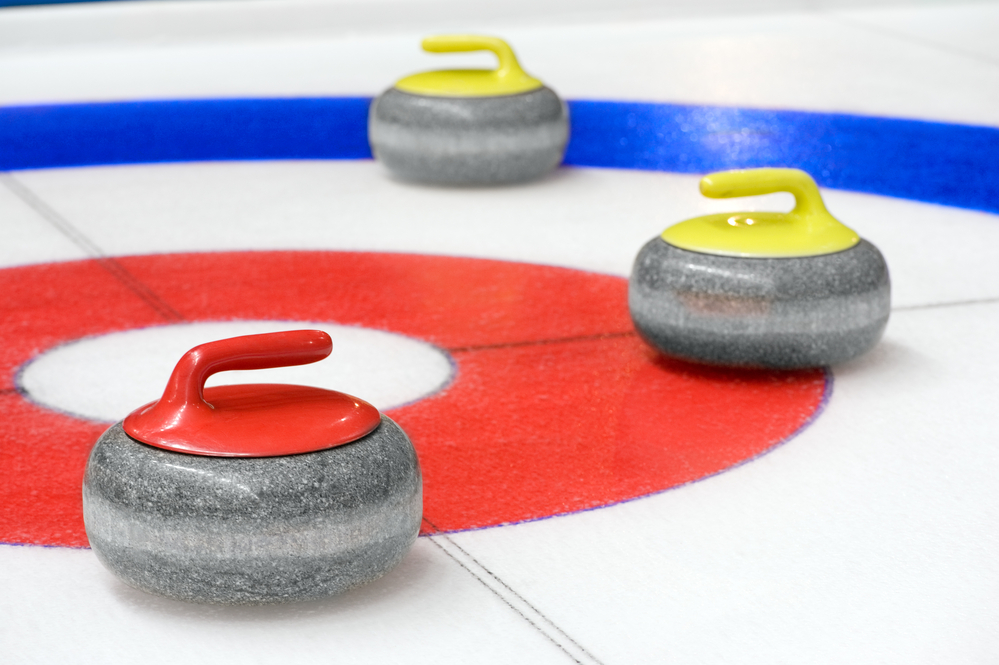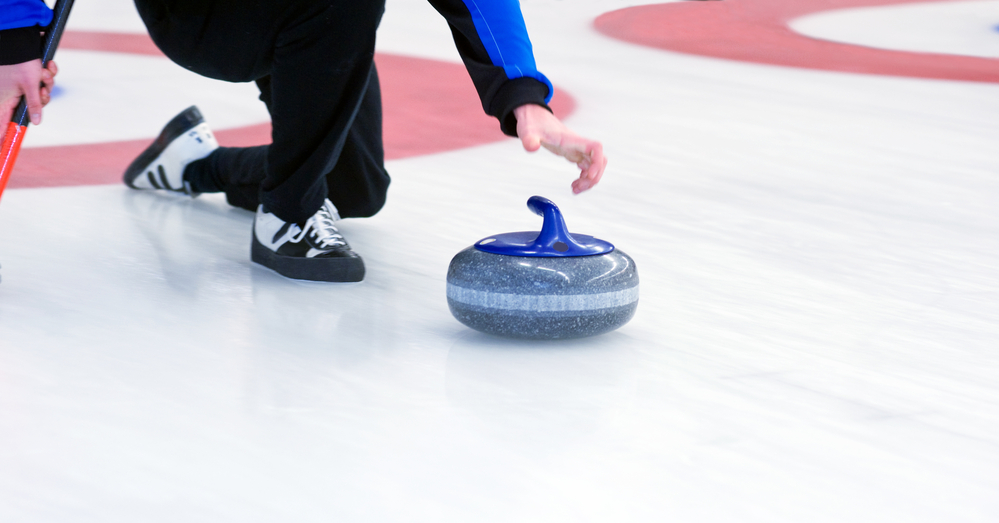In curling you score one point for each stone you have closer to the target area than your opponents’ closest stone. This means the better-performing team can score anywhere from 1 to 8 points in a round. The team without the closest stone always scores 0 points. However, points are only counted at the end of the round. So, if stones are knocked out of the way by other stones, even the best throws can go to waste. If none of the stones remain in the scoring area at the end of a round, neither team scores points.

Scoring in Curling
Curling is a game of strategy and precision, with scoring being a key component of the competition. Here, we’ll discuss the various aspects of scoring in curling, such as the objective, scoring at the end of each end, blank ends and their implications, and the role of the hammer.
Objective
The main objective in curling is to score more points than the opposing team by sliding stones towards the target area known as the house. Points are earned by having stones closer to the center (button) of the house than the opponent’s stones.
Scoring at the End of Each End
At the end of each round of the game, called an end, the team with the stone closest to the button earns points. A team can score between 0 and 8 points per end, with points awarded for each stone closer to the button than the opponent’s closest stone.
Blank Ends and Implications
A blank end occurs when no stones remain in the house after both teams have thrown their stones. In this case, neither team scores points. The skip may strategically instruct their team to aim for a blank end to retain the last stone advantage, known as the hammer, for the next end.
The Role of the Hammer
The hammer is the final stone thrown in an end, giving the team with the hammer a strategic advantage. Having the last shot allows the team to potentially score points or nullify the opponent’s points. The hammer is typically given to the team that didn’t score in the previous end or was determined by a coin toss at the beginning of the game.
Advanced Scoring Concepts
Now that we’ve covered the basics, let’s dive into more complex aspects of scoring in curling. Here is an introduction to some of the advanced strategies and tactics involved in the game.
Measuring Stone Distances
In situations where it is unclear which stone is closer to the button, a measuring device called a curling measure is used to determine the accurate distance between the stones and the button. This is essential to ensure the correct team is rewarded points.
Tiebreakers and Extra Ends
If the game is tied after the predetermined number of ends, extra ends are played until a winner emerges. Each extra end follows the same scoring rules, with the team scoring the most points declared the winner.
Strategy and Tactics
Curling involves a significant amount of strategy and tactics, such as choosing the right shot, controlling the placement of stones, and managing the hammer advantage. Teams also need to consider factors like ice conditions, the weight of the throw, and the amount of curl applied to the stone.
Keeping Score During a Game
Keeping track of points during a curling game is crucial for both players and spectators. Let’s check out the methods for tracking points and understanding the scoreboard.
Tracking Points
Scorekeeping in curling can be done using a traditional scoreboard, a digital scoreboard, or a simple scoresheet. Regardless of the method, it is crucial to update the score after each end. Since no points are scored until the last stone is thrown, scores are only updated at the completion of each end.
The Scoreboard
A curling scoreboard typically displays the team names or colors, the end numbers, and the points scored in each end. The scoreboard does not show the total points, so spectators must calculate the cumulative scores for each team by adding the points from each end.
How do You Score Points in a Game of Curling?
Points are scored in curling according to the following rules:
- The score is calculated at the completion of each end, after all the stones from each team have been thrown.
- A team scores 1 point for each of their stones that is closer to the “button” than the opponent’s closest stone.
- Since each team throws 8 stones per end, a team can score up to 8 points in a single end.
- The team that does not have the closest stone scores 0 points for the end.
- If no stones from either team remain in the scoring area when an end is completed, both teams score 0 points.
Curling matches can have incredible momentum swings. A team that is down by several points can make a stunning comeback with one well-played end. So, pay attention to the scoreboard as well as the action on the ice.


